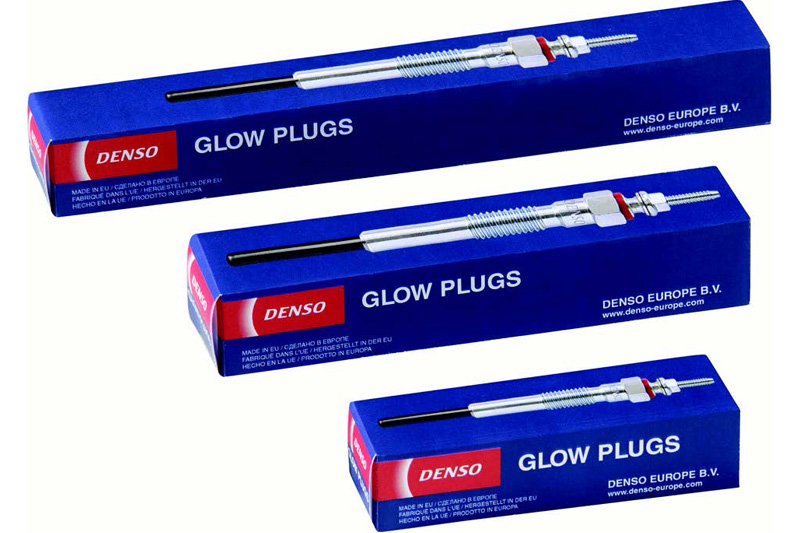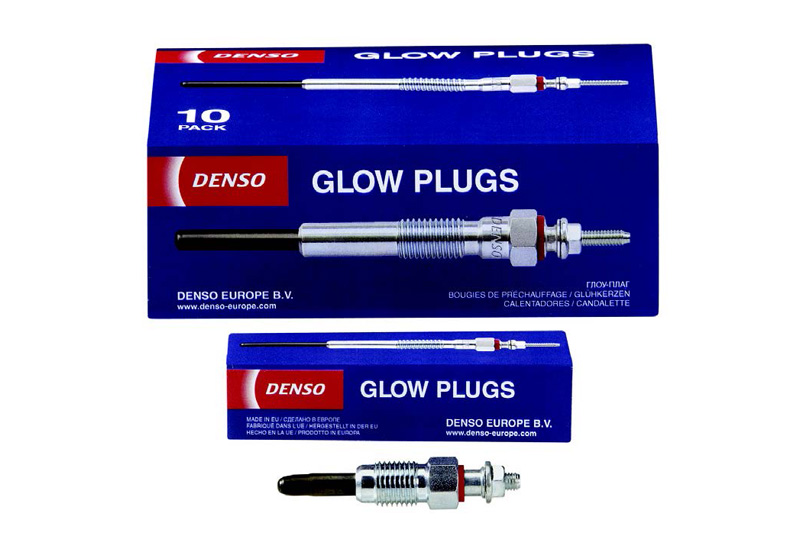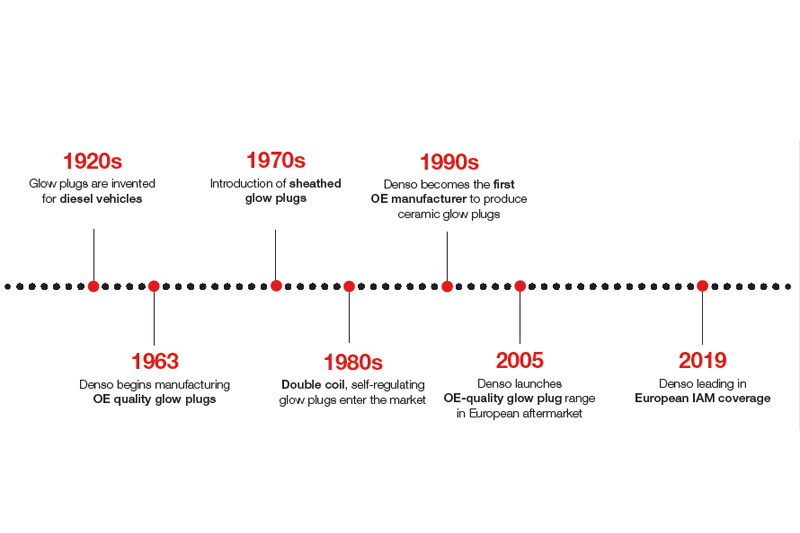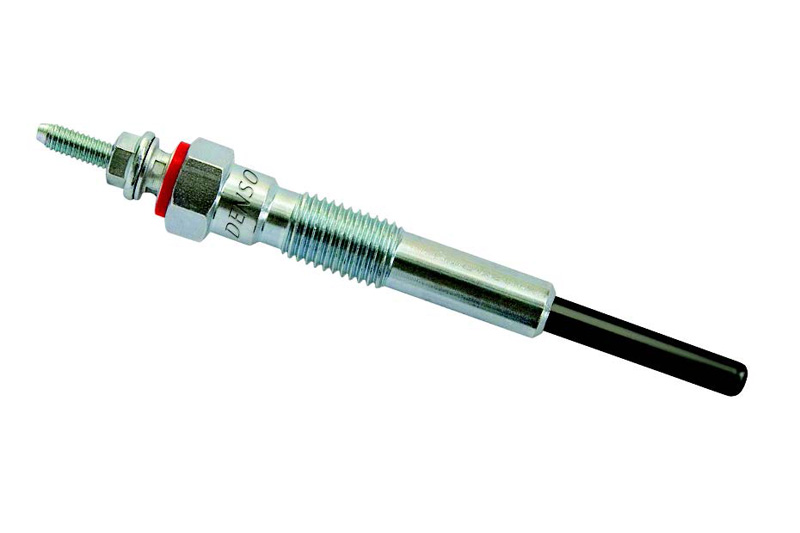
Denso takes a look at how glow plugs have evolved in line with modern vehicle requirements to become an essential part of the diesel car parc.
Aglow plug is, essentially, a heating device used to aid the start-up of diesel engines. During cold weather conditions, the mass of the cylinder block and cylinder head within a diesel engine causes the compression heat to be absorbed, preventing ignition.
Glow plugs solve this problem. Glow plugs have a heating element at the tip. They are situated in each cylinder of the diesel engine, reaching hot temperatures, providing enough heat for ignition and combustion processes.
Early glow plugs
The earliest glow plug designs were almost completely unrecognisable from those that are available on the market today. The first glow plugs had a very basic design, consisting of a very thick metal sheet, which contained a high temperature capacity wire rolled up into one or a few coils as a resistor. They were typically low voltage and therefore very slow, with an average heating time of around 60 seconds. Every time the glow plug was exposed to the combustion gas, its lifecycle was shortened and if just one glow plug failed, the entire circuit shut down, causing complete engine failure and a big repair job for technicians.
Vehicle manufacturers (VMs) wanted more reliable glow plugs to ensure successful ignition, and as diesel engines became more powerful, it was also important that glow plugs had a higher voltage. This led to the development of the sheathed glow plug.

Single coil
Unlike early glow plug designs, single coil glow plugs had a resistor made by a thin wire rolled into several coils. This was placed inside an iron tube, welded to one side and filled with insulating powder, before being pushed into the external iron cast body. The result was a considerably more durable and effective component. The low resistance of the glow plug meant it could effectively withstand higher voltages and heating temperatures, making for more efficient engine performance.
The single coil glow plug also helped towards overcoming the issue of wear associated with combustion gas exposure. With an optimum property profile, these glow plugs combine operating voltage, maximum pre-heating temperature, heating time and afterglow periods to meet the requirements of all vehicles, with a high resistance to chemical, mechanical and thermal loads, thus resulting in a longer service life.

Double coil
By the time the 80s arrived, VMs wanted even more instant ignition, prompting further glow plug developments. In response, the double coil, self-regulating glow plug was born.
Unlike traditional, monofilament glow plugs, which were made from a single wire, typically using nickel, double coil glow plugs had two serial resistors inside the tube. The additional resistor acted as a regulator and would play a major role in improved glow plug accuracy.
Previously, in monofilament glow plugs, heating was inversely proportional to resistance; if resistance was low, the plug would heat very quickly and burn out, whereas if the resistance was high, the plug would heat slowly at a low temperature. The addition of a selfregulating resistor gave the glow plug a positive temperature coefficient, meaning that the hotter the glow plug became, the higher its resistance was. This allowed the glow plug to reach a higher temperature in a shorter space of time, delivering effective engine ignition in just seven seconds.

Evolving materials in line with legislation
Diesel vehicles came under intense scrutiny for emissions during the 1990s, with strict limitations imposed on vehicle air pollutants. This new legislation also included glow plugs, which it stated, must be started for a preheating phase and remain warm for around 90 seconds to better aid ignition during cold periods. Named post-heating, this process would have a positive impact on glow plugs, helping to limit emissions in addition to accelerating engine start up.
However, typical glow plug designs required different materials in order to comply with post-heating requirements. As such, manufacturers began investigating new alloys and manufacturing processes to evolve monofilament glow plug designs.
Ceramic plug
Denso claims to have been the first OEM to produce ceramic glow plugs, improving ignition performance and reducing emissions within the new legislation. The conductive nature of ceramic material means the heating element can withstand higher temperatures with a longer operating life.
The developing temperature control technology for glow plugs has led to increased temperatures at a faster rate, better combustion at high temperatures and a longer shelf-life.
Instant heating
Denso also introduced double-coil technology with instant heating for metal glow plugs, delivering a self-regulating resistor that enables quick engine start-up, and reduced noise, vibrations and emissions.







